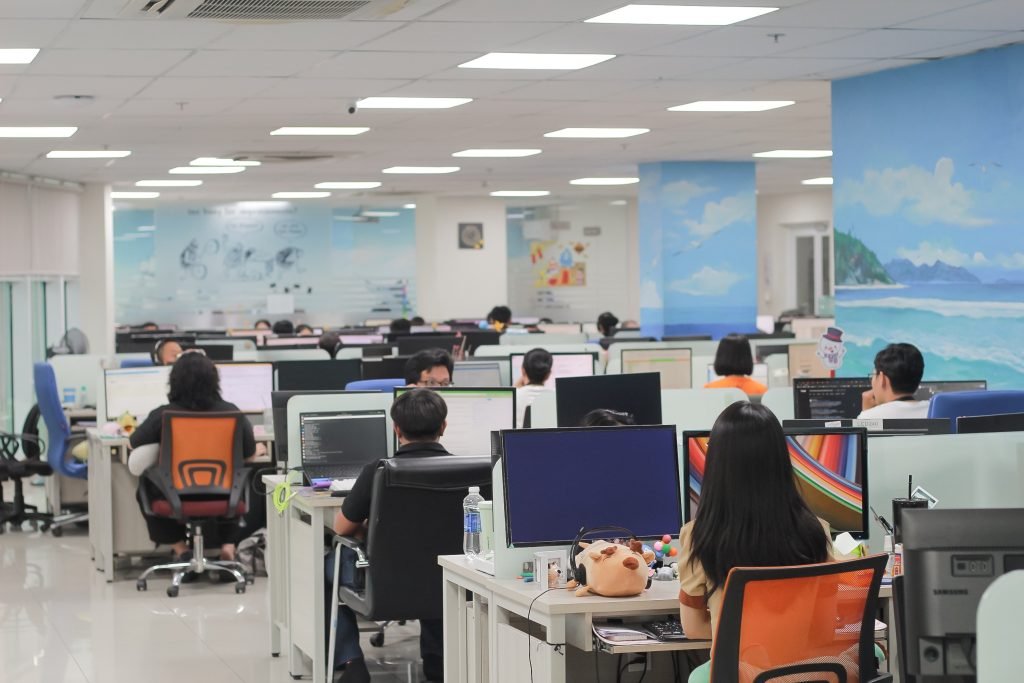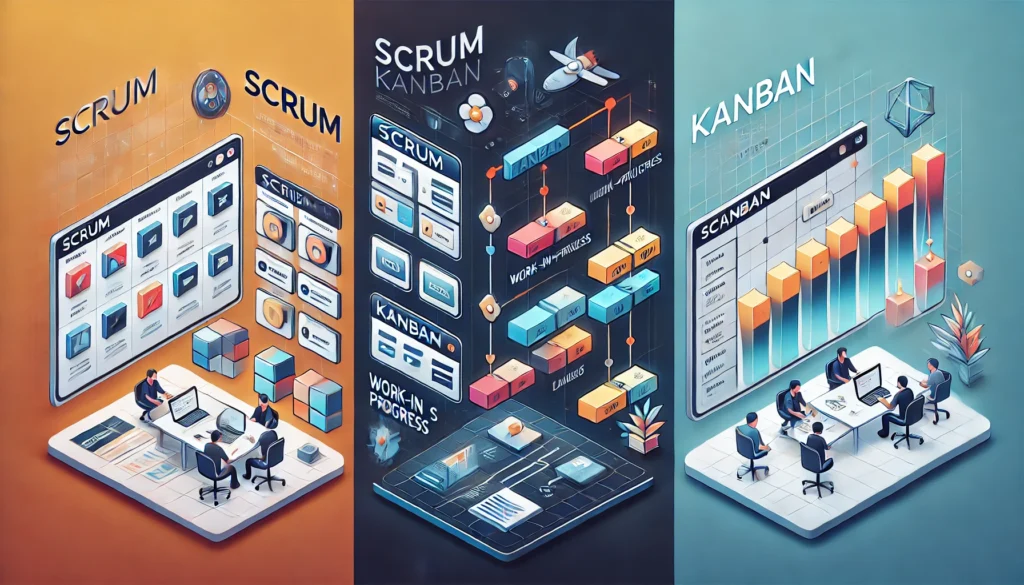The modern technology landscape is characterized by rapid innovation, fierce competition, and a global talent pool. To thrive in this environment, many businesses are increasingly turning to remote development teams. At ACT Tech, we’ve witnessed firsthand the transformative impact of embracing distributed development models, helping countless companies like yours scale quickly, access specialized skills, and optimize their development costs. In this article, we’ll explore the compelling benefits of remote development teams and provide practical best practices to ensure their success.
The Expanding Universe of Remote Development:
The concept of remote development teams, also known as distributed teams or even offshore development depending on the location of the team members, is no longer a niche strategy. It’s a mainstream approach adopted by organizations of all sizes, from burgeoning start-ups to established tech giants. This surge in popularity is driven by several key factors:
- Access to a Global Talent Pool: Geographic limitations often restrict your access to the best developers and engineers. By embracing a remote model, you can tap into a global talent pool, finding specialists with specific skills and expertise that might be unavailable locally. This can be particularly advantageous for niche technologies or emerging fields.
- Cost Optimization: Outsourcing development to regions with lower labor costs can significantly reduce your operating expenses without compromising quality. Offshore development, in particular, can offer substantial cost savings, allowing you to reinvest resources into other critical areas of your business.
- Increased Agility and Scalability: Remote teams provide the flexibility to scale your development capacity up or down quickly based on project needs. This agility is crucial in today’s fast-paced market, allowing you to respond rapidly to changing requirements and accelerate time-to-market.
- Improved Work-Life Balance: Remote work can lead to improved employee morale and productivity. Offering remote opportunities attracts and retains top talent who value flexibility and autonomy.
Collaboration: The Cornerstone of Remote Success:
While the benefits of remote development teams are undeniable, their success hinges on effective collaboration. Building a cohesive and productive distributed team requires a deliberate and strategic approach. Here’s how you can foster seamless collaboration within your remote development team:
- Establish Clear Communication Channels: One of the biggest challenges in managing remote teams is ensuring clear and consistent communication. We strongly recommend establishing defined communication channels and protocols.
- Instant Messaging: Tools like Slack, Microsoft Teams, or Discord are essential for quick, real-time communication and collaboration. Establish dedicated channels for specific projects, teams, and general company announcements.
- Video Conferencing: Regular video conferences, even for short check-ins, help build rapport and foster a sense of connection among team members. Encourage the use of video to enhance non-verbal communication and create a more personal interaction.
- Project Management Software: Tools like Jira, Asana, or Trello are crucial for tracking tasks, managing workflows, and ensuring everyone is aligned on project goals and timelines.
- Documentation: Detailed documentation is critical for remote teams. Use tools like Confluence or Google Docs to create a central repository of project information, code standards, and meeting notes.
- Define Clear Roles and Responsibilities: Clearly define each team member’s roles and responsibilities to avoid ambiguity and overlap. This clarity is particularly important in a remote setting, where informal communication and spontaneous collaboration are less frequent.
- Implement Agile Methodologies: Agile methodologies like Scrum or Kanban are well-suited for remote development. They promote iterative development, frequent feedback, and continuous improvement, which are essential for maintaining alignment and driving progress in a distributed environment. Daily stand-up meetings, sprint reviews, and retrospectives help the team stay connected and address challenges proactively.
- Foster a Culture of Open Communication: Encourage open and honest communication among team members. Create a safe space where individuals feel comfortable sharing their ideas, concerns, and feedback. Regular check-ins and one-on-one meetings can help build trust and strengthen relationships.
- Invest in Collaboration Tools: We cannot stress enough the importance of investing in the right communication tools and infrastructure. These tools should be user-friendly, reliable, and accessible to all team members, regardless of their location or time zone. Consider tools for:
- Code Sharing and Version Control: Git and platforms like GitHub, GitLab, or Bitbucket are indispensable for managing code changes and facilitating collaboration among developers.
- Design Collaboration: Tools like Figma or Adobe XD allow designers to collaborate on designs in real-time, regardless of their location.
- Whiteboarding and Brainstorming: Online whiteboarding tools like Miro or Mural enable remote teams to brainstorm ideas, visualize concepts, and collaborate on problem-solving.

Boosting Productivity in Remote Development:
Maintaining productivity in a remote development team requires a focused approach to time management, task prioritization, and performance monitoring. Here are some strategies to help your remote development team stay on track and deliver exceptional results:
- Establish Clear Goals and Objectives: Set clear, measurable, achievable, relevant, and time-bound (SMART) goals for each project and individual. Regular progress tracking and performance evaluations help ensure that everyone is aligned and working towards the same objectives.
- Implement Time Tracking: Time tracking tools can provide valuable insights into how team members are spending their time. This data can be used to identify bottlenecks, optimize workflows, and improve overall efficiency.
- Encourage Regular Breaks and Downtime: Remote work can sometimes lead to burnout, as individuals may feel pressure to be constantly available. Encourage team members to take regular breaks, disconnect from work after hours, and prioritize their well-being.
- Provide Training and Development Opportunities: Invest in training and development opportunities to help your remote development team stay up-to-date with the latest technologies and best practices. This not only enhances their skills but also demonstrates your commitment to their growth and development.
- Address Time Zone Differences Strategically: When working with remote teams across different time zones, it’s crucial to establish a system for managing schedules and ensuring effective communication. Overlapping working hours, shared calendars, and asynchronous communication tools can help bridge the time zone gap. Consider recording meetings for those who cannot attend live due to time differences.
Addressing Challenges in Remote Development:
While the benefits of remote development teams are substantial, it’s important to acknowledge and address the potential challenges that can arise:
- Communication Barriers: Language barriers, cultural differences, and technical difficulties can sometimes hinder communication. To mitigate these challenges, consider providing language training, cultural sensitivity workshops, and reliable communication tools.
- Lack of Face-to-Face Interaction: The absence of face-to-face interaction can sometimes lead to feelings of isolation and detachment. Encourage regular video conferences, virtual team-building activities, and even occasional in-person meetups to foster a sense of community.
- Security Concerns: Remote work can increase the risk of security breaches and data leaks. Implement robust security measures, such as VPNs, multi-factor authentication, and data encryption, to protect your sensitive information.
Conclusion:
Remote development teams are revolutionizing the way software is developed and are becoming an increasingly vital part of the modern technology landscape. By embracing remote teams, you can access a global talent pool, optimize your development costs, and accelerate innovation. However, success requires a strategic approach, focusing on effective communication, collaboration, and productivity.
We believe that with the right tools, processes, and culture, you can build a high-performing remote development team that drives your business forward. At [Your Company Name], we’re committed to helping you navigate the complexities of remote development and unlock its full potential. We offer tailored solutions and expert guidance to help you build, manage, and optimize your remote development teams. We’re here to help you scale your development capacity, access specialized skills, and achieve your business goals.
For further advice, please contact us via Zalo/Phone: +84.944.065.860 or email info@acttech.asia.





